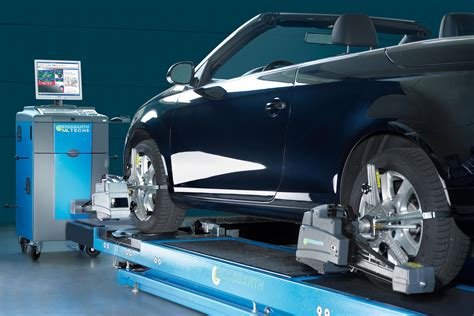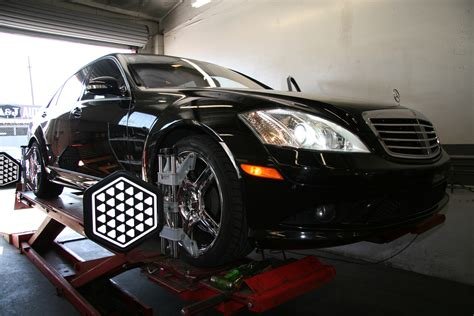Discover key signs your vehicle needs wheel alignment, how it works, and maintenance tips. Learn why proper alignment is crucial for safety and tire life.
Wheel alignment is very important for your car. When your wheels are not aligned, you may notice some problems like uneven tire wear or your car pulling to one side. You might also feel vibrations while driving. In this article, we will look at what wheel alignment is, how to tell if your car needs it, and how it works. We will also explore different types of alignment services and share tips on how to check and maintain your alignment. Stay tuned to learn all you need about keeping your wheels in line!
What is Wheel Alignment and Why is it Important?
Wheel alignment is a crucial aspect of vehicle maintenance that involves adjusting the angles of the wheels so that they are set to the car maker’s specifications. Proper wheel alignment ensures that your vehicle handles correctly and that tires wear evenly. When done right, it improves vehicle handling, extends tire life, and enhances overall safety.
Importance of Wheel Alignment
- Effects on Vehicle Handling: Correct wheel alignment ensures that your vehicle drives straight and true. If your wheels are misaligned, you might experience difficulties in steering, which can affect your driving safety.
- Impact on Tire Wear and Longevity: Misaligned wheels cause uneven tire wear. For example, if your wheels are out of alignment, you might notice that your tires are wearing more on one side. Proper alignment helps in achieving even wear, which extends the lifespan of your tires.
- Influence on Fuel Efficiency and Safety: Misalignment can lead to increased rolling resistance, which means your engine has to work harder, reducing fuel efficiency. Moreover, correct alignment ensures better vehicle stability, which is critical for safe driving.
Common Signs That Your Vehicle Needs Wheel Alignment
Symptoms of Poor Wheel Alignment
- Uneven Tire Wear Patterns: Look for uneven wear on your tires. For instance, excessive wear on one side of the tire can indicate alignment issues.
- Steering Wheel Off-Center: If your steering wheel is off-center or crooked while driving straight, it might be a sign that your wheels are misaligned.
- Vehicle Pulling to One Side: If you notice your vehicle drifting to one side without you steering, this could be a sign of misalignment.
- Vibrations or Shaking While Driving: Vibrations felt in the steering wheel or the seat can be a result of improper alignment.
How to Diagnose Alignment Issues

To diagnose alignment issues, start with a visual inspection of your tires. Look for signs of uneven wear. If you suspect misalignment, a professional alignment check is recommended. Professional services use precise equipment to measure and correct alignment angles.
How Does Wheel Alignment Work?
Understanding Alignment Angles
- Camber Angle: This is the tilt of the wheels when viewed from the front of the vehicle. Positive camber means the top of the wheel is tilted away from the vehicle, while negative camber means it’s tilted towards it. The correct camber angle is crucial for handling and tire wear.
- Caster Angle: The caster angle affects steering stability. It is the angle of the steering axis when viewed from the side of the vehicle. Positive caster helps with straight-line stability, while negative caster can affect steering.
- Toe Angle: This refers to the direction in which the tires point relative to the centerline of the vehicle. Toe-in means the front of the tires points towards the center, while toe-out means they point away. Correct toe alignment is essential for even tire wear and straight driving.

The Wheel Alignment Process
Wheel alignment involves adjusting the angles of the wheels to match the manufacturer’s specifications. Technicians use specialized alignment equipment to measure and adjust the angles of camber, caster, and toe. The process ensures that your wheels are aligned correctly, improving your vehicle’s handling and safety.
Different Types of Wheel Alignment Services
Front-End Alignment
A front-end alignment focuses on adjusting the angles of the front wheels. It is usually required if you experience handling issues or uneven wear on the front tires. This type of alignment is essential for vehicles with adjustable front suspension.
Four-Wheel Alignment
A four-wheel alignment adjusts all four wheels of the vehicle. It is recommended for vehicles with independent rear suspension or if you notice alignment issues in all wheels. This type of alignment ensures that all four wheels are aligned to provide optimal handling and tire wear.
Specialized Alignments
Some vehicles require specialized alignments, such as those for performance or off-road vehicles. These alignments might involve custom adjustments to suit specific driving needs and conditions.
How to Check and Maintain Your Wheel Alignment

DIY Wheel Alignment Checks
While professional alignment services are recommended for precision, you can perform basic checks at home. Use a tape measure to check the toe angle by measuring the distance between the front and rear of your tires. Compare the measurements to the vehicle’s specifications.
Regular Maintenance Tips
Regular alignment checks are recommended every 6 to 12 months or whenever you notice handling issues. Regular maintenance includes checking tire pressure and ensuring that your suspension system is in good condition.
Cost Considerations
Professional wheel alignment services typically range from $75 to $100, depending on the vehicle and location. Investing in regular alignment services can save you money in the long run by extending the life of your tires and improving fuel efficiency.
Common Wheel Alignment Questions and Myths
- Misconceptions About Wheel Alignment and Tire Wear: Some people believe that alignment issues will only affect tire wear, but they can also impact vehicle handling and safety.
- Clarifying Misunderstandings About Alignment Costs: The cost of alignment is often viewed as a significant expense, but regular alignment maintenance can save you money by extending tire life and improving fuel efficiency.
Proper wheel alignment is essential for smooth driving and long-lasting tires. We’ve covered how to recognize alignment issues, understand the alignment process, and maintain it effectively. For more tips and insights, feel free to leave a comment, share this article, or explore more content on our site. Your vehicle will thank you for it!

FAQs about Wheel Alignment
What is Wheel Alignment?
Wheel alignment refers to adjusting the angles of your vehicle’s wheels to match the manufacturer’s specifications. Proper alignment ensures that your vehicle drives straight and handles correctly, improving safety and tire longevity. Misalignment can lead to uneven tire wear and poor handling.
How Do I Know If My Car Needs a Wheel Alignment?
You might need a wheel alignment if you notice any of the following signs:
- Uneven Tire Wear: Check for uneven wear patterns on your tires.
- Steering Wheel Off-Center: If your steering wheel is not centered while driving straight, it could indicate misalignment.
- Vehicle Pulling to One Side: If your car drifts to one side, alignment issues might be the cause.
- Vibrations or Shaking: Unusual vibrations in the steering wheel or seat can signal alignment problems.
How Often Should I Get My Wheel Alignment Checked?
It is recommended to have your wheel alignment checked every 6 to 12 months, or whenever you notice symptoms like uneven tire wear or steering issues. Regular alignment checks can prevent problems and ensure your vehicle handles properly.

Can I Perform a Wheel Alignment Myself?
While basic checks can be done at home using a tape measure for toe angles, precise wheel alignment requires professional equipment. Alignment machines used by technicians measure and adjust angles with high accuracy, something DIY methods cannot achieve.
What Does a Wheel Alignment Service Involve?
A professional wheel alignment service typically involves:
- Measuring Alignment Angles: Technicians use specialized equipment to measure camber, caster, and toe angles.
- Adjusting Angles: Based on the measurements, adjustments are made to align the wheels according to the manufacturer’s specifications.
- Testing: After adjustments, the vehicle is tested to ensure proper alignment.